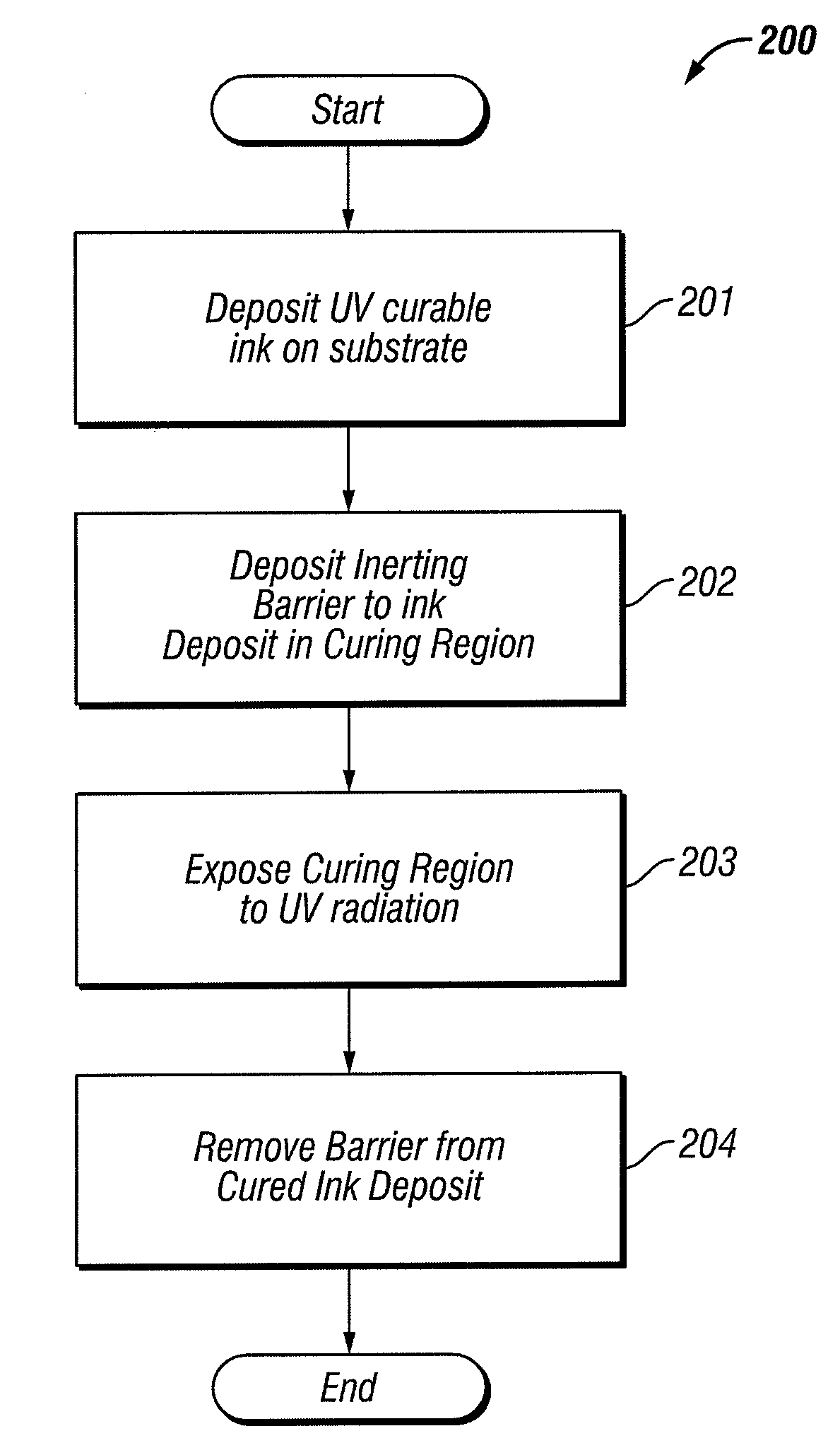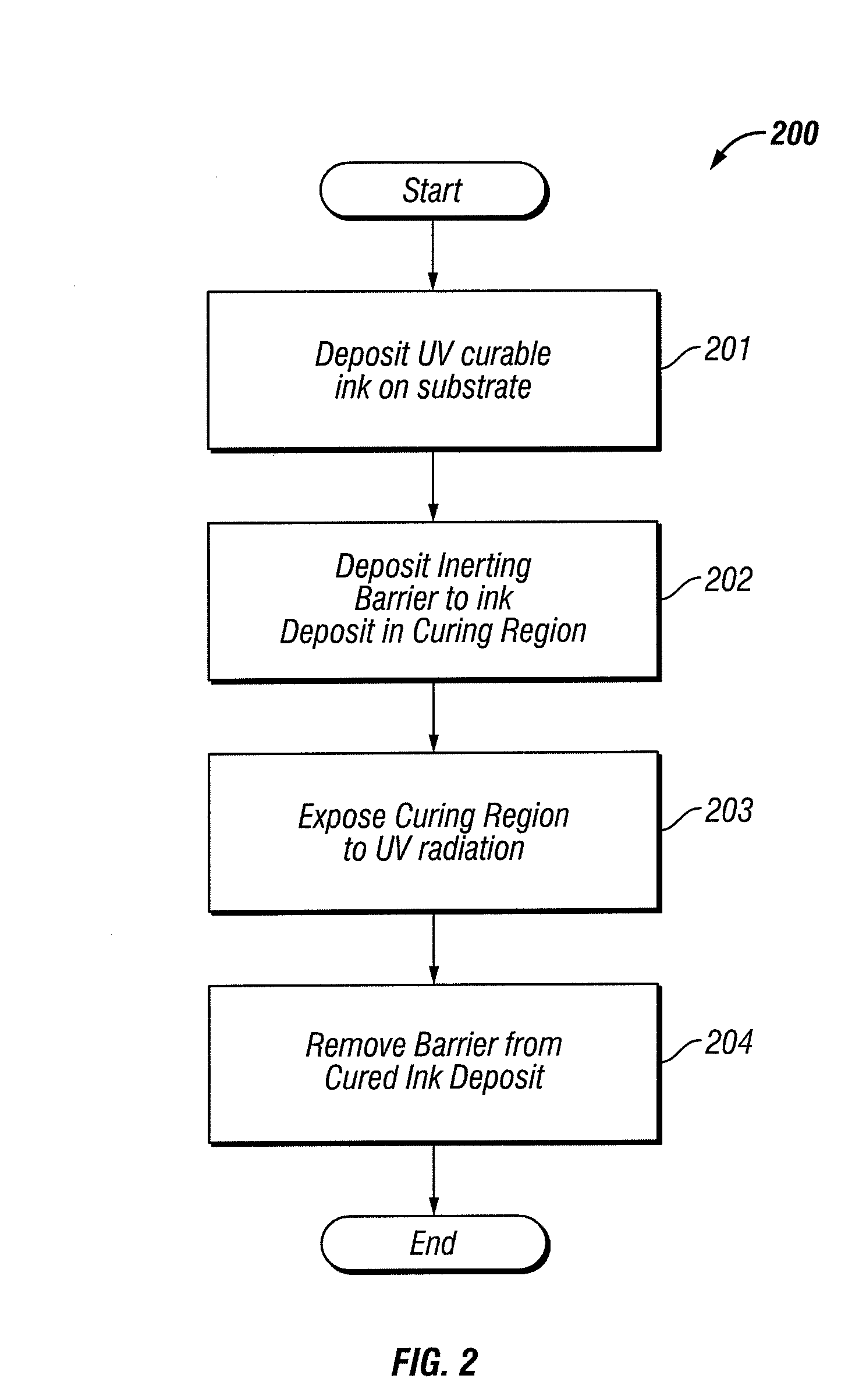Inert UV inkjet printing
a technology of inkjet printing and ultraviolet light, applied in the field ofinkjet printing, can solve the problems of shortening the feasibility of common inkjet printing systems, increasing ink and printer costs, and final film properties, and achieves the effects of reducing the oxygen curing region, less reactive gas introduction, and reducing the possibility of oxygen reacting
- Summary
- Abstract
- Description
- Claims
- Application Information
AI Technical Summary
Benefits of technology
Problems solved by technology
Method used
Image
Examples
Embodiment Construction
[0035]Systems and methods are provided for curing ink, using one or more ultraviolet light sources and a means for providing a reduced oxygen curing region. The means for providing a reduced oxygen curing region can be adapted for use with a common printing system. FIG. 1 is an isometric view of a common printing system 10, adapted for printing images on a variety of substrates. The printing system 10 includes a base 12, a transport belt 14 which moves the substrate through the printing system, a rail system 16 attached to the base 12, and a carriage 18 coupled to the rail system 16. The carriage 18 holds a series of inkjet print heads (not shown) and is attached to a belt 20 which wraps around a pair of pulleys (not shown) positioned on either end of the rail system 16. A carriage motor is coupled to one of the pulleys and rotates the pulley during the printing process. As such, when the carriage motor causes the pulley to rotate, the carriage moves linearly back and forth along th...
PUM
 Login to View More
Login to View More Abstract
Description
Claims
Application Information
 Login to View More
Login to View More - R&D
- Intellectual Property
- Life Sciences
- Materials
- Tech Scout
- Unparalleled Data Quality
- Higher Quality Content
- 60% Fewer Hallucinations
Browse by: Latest US Patents, China's latest patents, Technical Efficacy Thesaurus, Application Domain, Technology Topic, Popular Technical Reports.
© 2025 PatSnap. All rights reserved.Legal|Privacy policy|Modern Slavery Act Transparency Statement|Sitemap|About US| Contact US: help@patsnap.com



